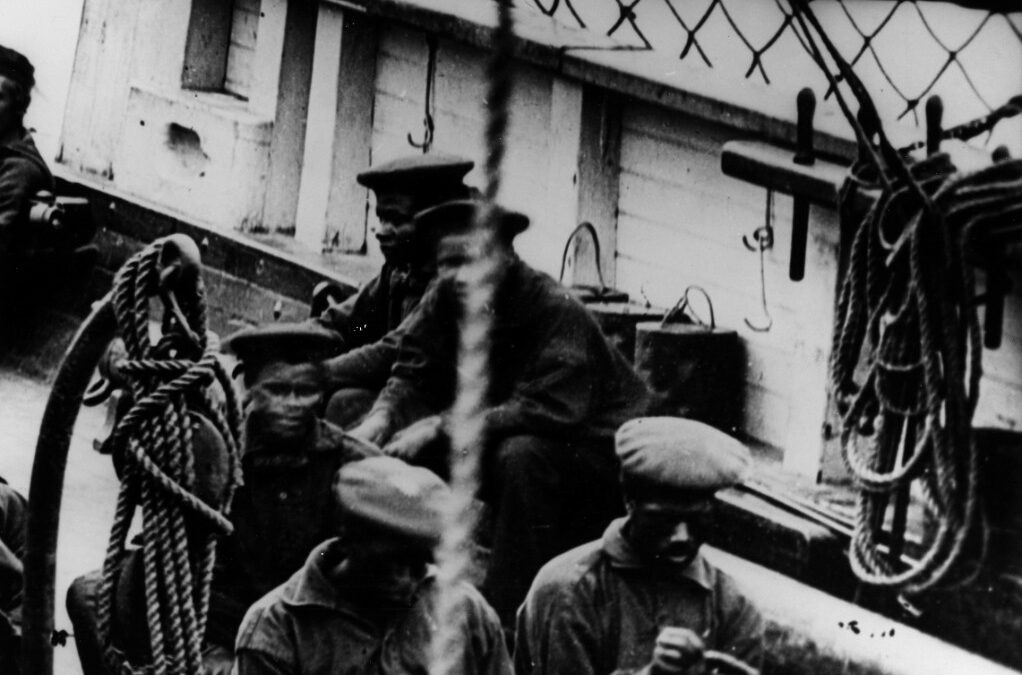During the American Revolutionary War, the Navy allowed enslaved and free African Americans to fight. Unlike the Continental Army, where only free persons were allowed to join (this rule changed eventually).
Many blacks were experienced Sailors, they became an asset to the Naval forces, many of whom were freed once the war ended due to their service. Private ships, or privateers, attracted many slaves since they were a more secure way to escape because it was harder to get caught. They also gave higher financial rewards than in the state’s navies (PBS).
The fight for freedom against the British motivated many African Americans to continue to fight for abolition. For instance, James Forten was a free black man who later became a Sailor during the American Revolution. From a young age he showed his commitment by taking care of his family at eight years old when his father passed away.
Forten was just 14 when the war for independence started and joined onboard a privateer. He was taken as prisoner of war by the British, but eventually he was set free during a prisoner exchange. Forten then went on to learn sailmaking, with time he became a successful businessman in the ship industry and a strong advocate and financial supporter for the abolition movement (The Constitutional).
When the Civil War broke out, it was common to find whites and blacks integrated in ships due to the nature of ship life.
According to historical records it is estimated that by the time the war ended, African Americans made up between 16 to 20 percent of enlisted personnel in the Union’s Navy, they received equal pay, and some were even recipients of the Medal of Honor.
Nonetheless, discrimination was still prevalent since Blacks were not allowed to be officers and were designated as “Landsman” instead of “Sailor” despite their maritime experience. It wasn’t until WWII that the first African Americans Sailors were commissioned.
Despite racism, the Civil War paved the way for a more conscious nation given that many union white Sailors helped slaves to escape. Once again, naval ships served as a way to reach freedom.
During the war, the Secretary of the Navy, Gideon Welles declared that all African Americans could serve in the Navy, whether they were free or enslaved. Once they came onboard an union ship, they were given the choice to enlist or to be dropped off at a Northern port as free people.
There are also written accounts from white Sailors telling stories of how Naval ships across the Mississippi River would rescue dozens of slaves and even go into plantations to rescue them. For example, William Park, a white Sailor who was serving aboard the USS Essex wrote of how his crewman went with an escapee back to his plantation to rescue his son (Naval History and Heritage Command).
African American men and women in the south were key to the union’s success by providing intel and manpower, but more importantly, it fostered a path for whites to see black people as equal to them by fighting for the same cause.
Sources:
Naval History and Heritage command. “African Americans in the U.S. Navy During the Civil War”. https://www.history.navy.mil/browse-by-topic/wars-conflicts-and-operations/civil-war-archive1/african-americans-in-the-u-s–navy-during-the-civil-war.html
PBS Thirteen. “Black Revolutionary Seamen”. https://www.pbs.org/wgbh/aia/part2/2p51.html
The Constitutional Walking Tour. “James Forten – One of America’s Founding Fathers”. https://www.theconstitutional.com/blog/2020/06/30/james-forten-one-americas-founding-fathers

